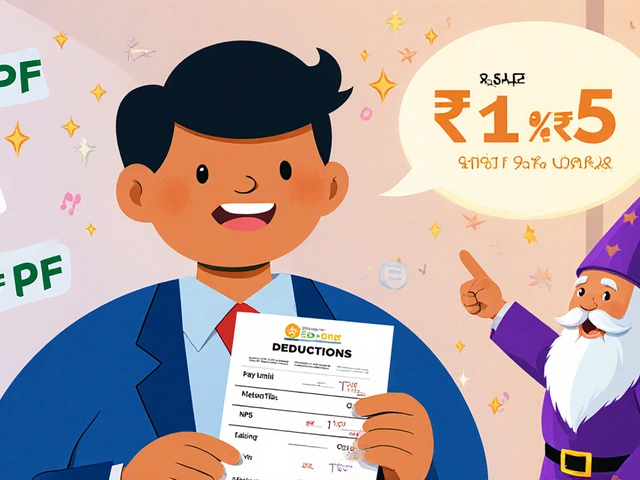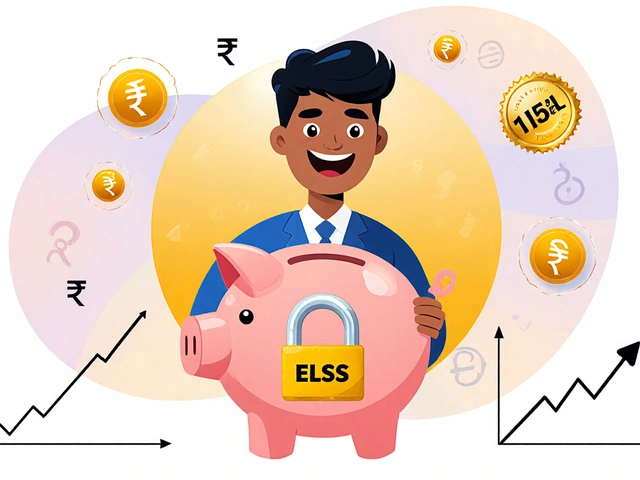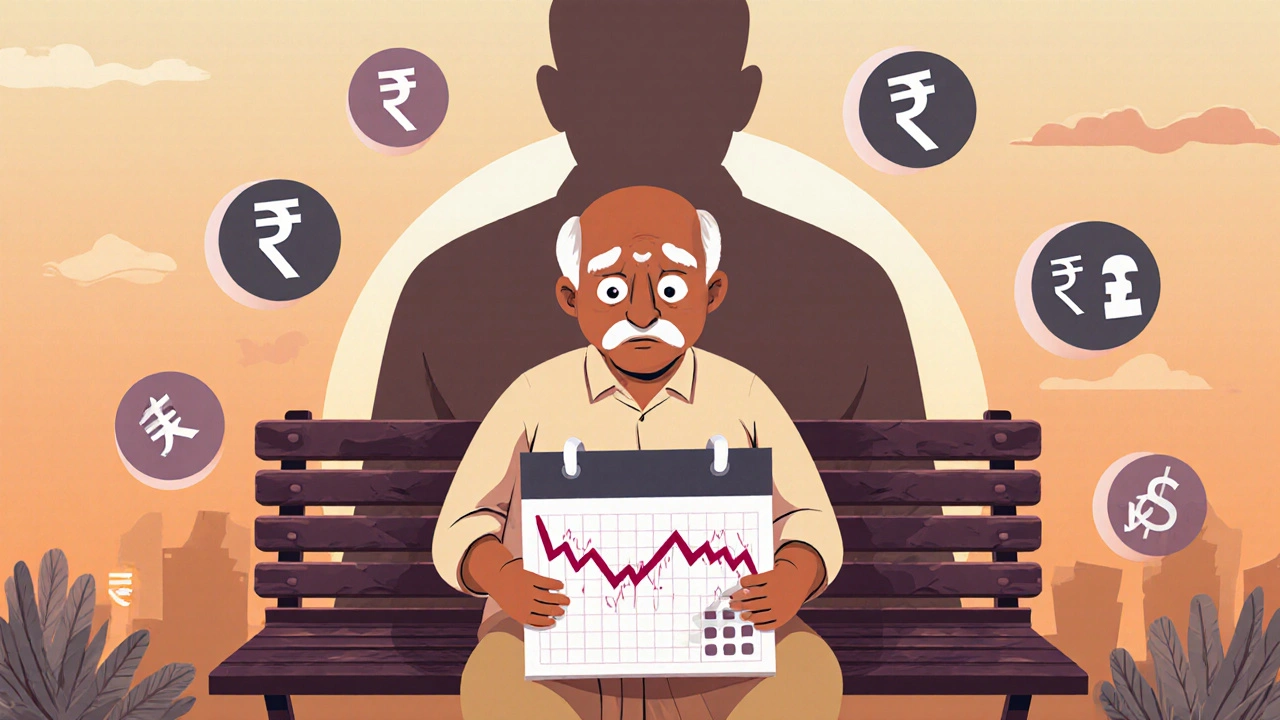Sequence of Returns Risk in India: How to Protect Your Retirement Income
Imagine this: you’ve saved for 30 years. You finally retire at 60, ready to enjoy your golden years. Your portfolio has ₹1.2 crore. You plan to withdraw ₹60,000 every month-just enough to cover rent, groceries, medical bills, and a little travel. Sounds safe, right? Now imagine the market crashes in your first year of retirement. Your portfolio drops 30%. You still take out ₹60,000. The next year, it barely recovers. The year after, it dips again. By year five, you’re down to ₹50 lakh. You didn’t spend more. You didn’t make a mistake. But your money is vanishing anyway. This isn’t a hypothetical. It’s called sequence of returns risk-and it’s one of the quietest killers of retirement dreams in India.
What Is Sequence of Returns Risk?
Sequence of returns risk isn’t about how much your investments earn over time. It’s about when those gains or losses happen-especially in the first few years after you stop working. If you start pulling money out of your portfolio during a market downturn, you’re forced to sell assets at low prices. That means fewer shares are left to grow when the market recovers. Even if your long-term average return is 8%, a bad start can shrink your portfolio so badly that you run out of money before you die.
This isn’t theory. A 2023 study by the National Institute of Public Finance and Policy tracked retirees in India who withdrew 5% annually from equity-heavy portfolios. Those who retired in 2008 (after the global crash) saw their portfolios drop by 42% within five years. Those who retired in 2014 (during a stable bull run) saw theirs grow by 28%. Same strategy. Same starting amount. Different outcomes-just because of timing.
Why Is This Worse in India?
Indian retirees face unique pressures. Most don’t have pensions. Social security is minimal. Many rely entirely on personal savings, fixed deposits, or mutual funds. And here’s the catch: Indians tend to invest heavily in equities for growth, often without adjusting their withdrawal strategy as they age.
Take fixed deposits. They’re safe, but returns are below inflation. In 2025, FD rates hover around 6.5-7.5%. Inflation? Around 5.2%. That means your money is losing real value every year. If you’re withdrawing from FDs alone, you’re eating into your principal just to keep up.
Now combine that with equity investments. Many retirees in India keep 60-70% of their portfolio in mutual funds or direct stocks, chasing higher returns. But that exposes them to big swings. The Nifty 50 dropped 18% in 2020, 15% in 2022, and 12% in early 2024. If you’re withdrawing during any of those years, you’re locking in losses.
How It Plays Out in Real Life
Meet Ramesh, 62, from Pune. He retired in 2021 with ₹1.5 crore. He put ₹90 lakh in equity mutual funds and ₹60 lakh in FDs. He planned to withdraw ₹50,000 monthly-₹30,000 from FDs, ₹20,000 from equities.
By mid-2022, the market dropped. His equity fund value fell to ₹68 lakh. He still needed ₹20,000 from it. He sold more units than planned. By 2023, his equity portion was down to ₹52 lakh. He kept withdrawing. In 2024, the market bounced back. His portfolio rose to ₹78 lakh. But he’d already sold too many units at low prices. He couldn’t recover the lost compounding. At 64, he’s now worried he’ll run out by 75.
His mistake? He didn’t adjust withdrawals based on market conditions. He treated his portfolio like a bank account.
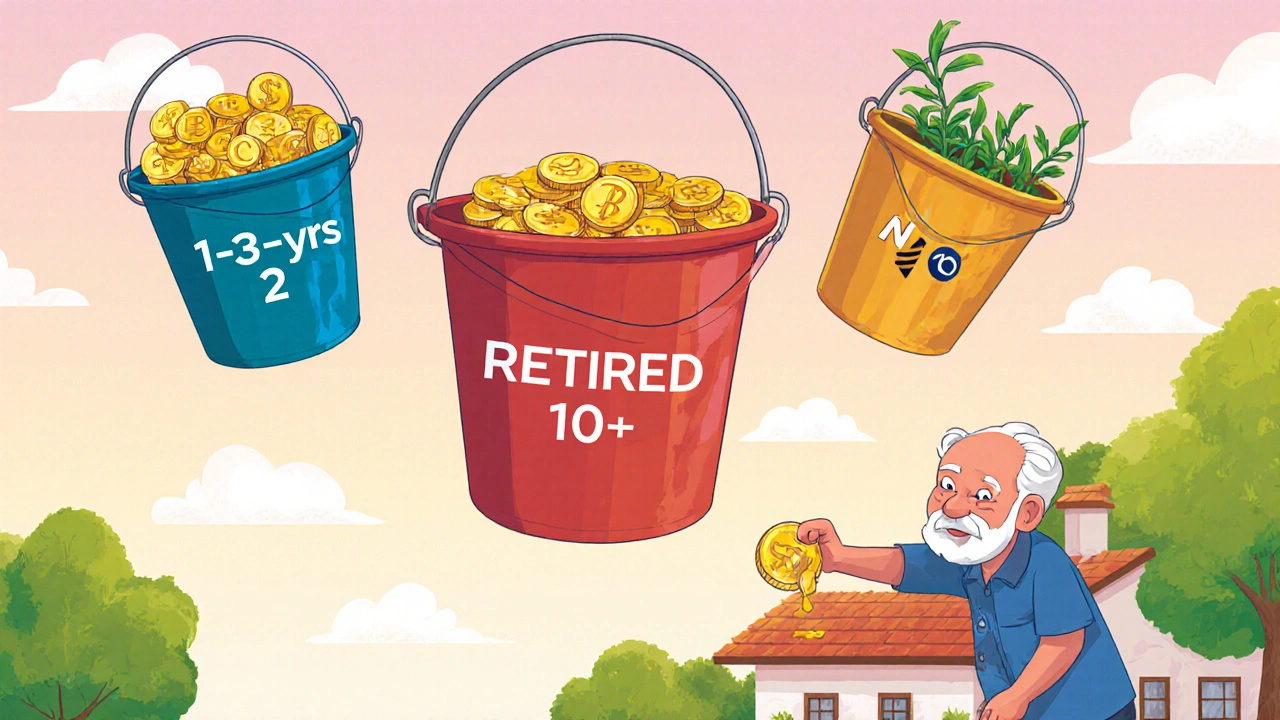
How to Protect Your Retirement Income
You can’t control market timing. But you can control your response. Here’s how to build a retirement plan that survives bad sequences:
- Build a cash buffer-Keep 2-3 years of living expenses in safe, liquid assets: fixed deposits, liquid funds, or short-term debt funds. This lets you avoid selling equities during downturns.
- Use the bucket strategy-Divide your portfolio into three buckets: Bucket 1 (1-3 years of expenses, safe assets), Bucket 2 (4-10 years, low-risk debt), Bucket 3 (10+ years, equities). Only refill Bucket 1 from Bucket 2 or 3 when markets are up.
- Adopt flexible withdrawals-Instead of taking the same amount every month, adjust by 5-10% based on market performance. If your portfolio dropped 10% last year, take 5% less this year. If it grew 15%, you can afford to take a little more.
- Delay Social Security if possible-In India, that’s not an option. But you can delay withdrawals. Work part-time for a few more years. Even ₹15,000/month extra for two years adds ₹3.6 lakh to your buffer.
- Use annuities wisely-A fixed annuity from LIC or private insurers guarantees monthly income. But they lock in low rates. Only use them to cover essentials-like rent or medical bills-not luxury spending.
What Most People Get Wrong
Many retirees think the solution is to be more conservative. They shift everything to FDs. But that’s a trap. Inflation eats away at purchasing power. A ₹50,000 monthly income today will feel like ₹30,000 in 10 years if inflation stays at 5%.
Others think they can time the market. They wait for a “good time” to retire. But no one can predict when that will be. The market might keep rising for years-or crash the month after you retire. Waiting for perfect timing is a gamble you can’t afford.
The real solution isn’t about being right about the market. It’s about designing a system that works no matter what the market does.
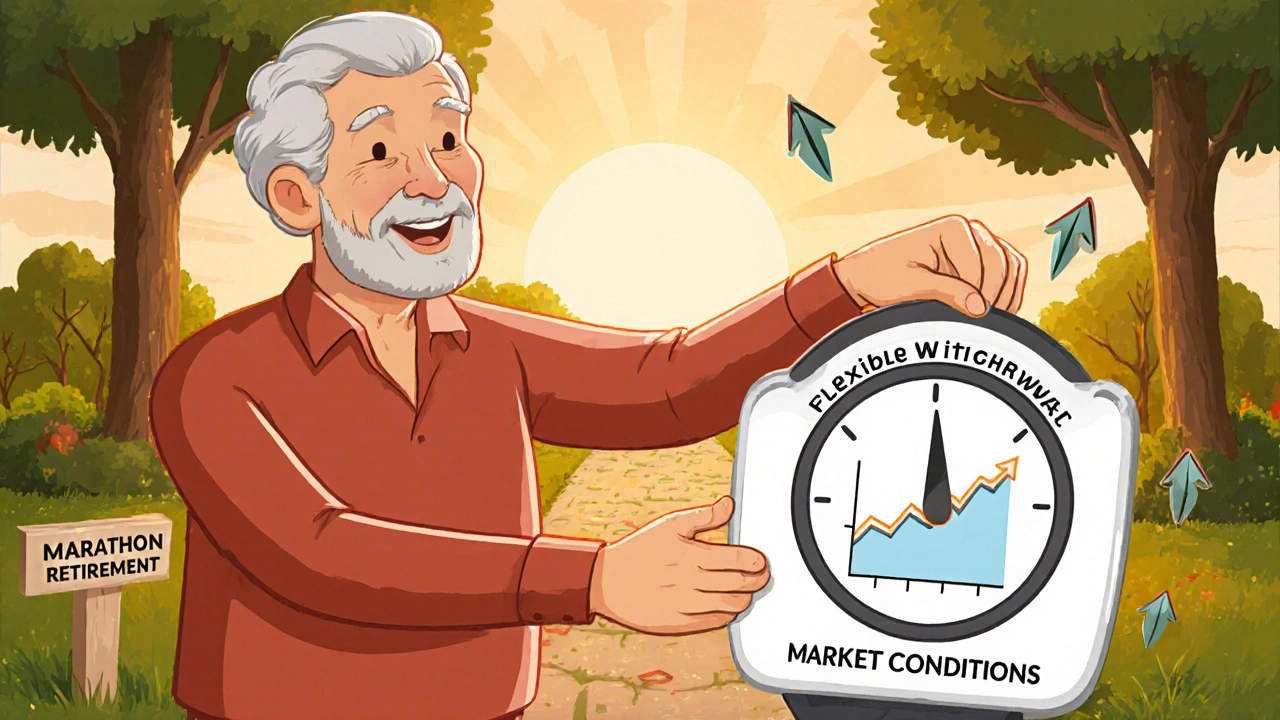
Tools to Help You Plan
You don’t need a financial advisor to get started. Here are simple tools you can use today:
- Retirement calculators-Use the NSE’s free retirement planner or the PFRDA’s calculator. Input your current savings, expected expenses, and inflation. It will show you how long your money will last under different withdrawal rates.
- Withdrawal simulators-Try the “Retirement Withdrawal Simulator” by Value Research. You can simulate what happens if you retire in 2020, 2022, or 2025 with different asset mixes.
- Rebalance annually-Once a year, check your portfolio. If equities have grown too big, sell a bit and move to debt. If debt has shrunk, move back into equities. This keeps your risk level steady.
What to Do Right Now
If you’re still working:
- Start building your cash buffer. Aim for ₹10-15 lakh in liquid assets before you retire.
- Reduce your equity exposure gradually. If you’re 55, keep no more than 60% in equities. At 60, aim for 40-50%.
- Consider a systematic withdrawal plan (SWP) from debt funds instead of FDs. SWPs give you steady income and are more tax-efficient than FD interest.
If you’re already retired:
- Stop withdrawing from equities if your portfolio is down more than 10% from its peak.
- Use your cash buffer first. Let your equities recover.
- Revisit your budget. Can you cut non-essential spending for a year? Even ₹5,000/month saved adds ₹60,000 to your safety net.
Final Thought: It’s Not About the Numbers. It’s About Control.
Sequence of returns risk isn’t about being rich or poor. It’s about losing control. When your portfolio drops and you’re forced to sell, you feel powerless. But you’re not. You can build systems that give you back control.
The goal isn’t to beat the market. It’s to outlast it. To live long enough to see the recovery. To have enough safety nets so you don’t have to panic when the market stumbles.
Your retirement isn’t a sprint. It’s a marathon-and the first few miles are the hardest. But with the right plan, you won’t just survive. You’ll thrive.
What is sequence of returns risk in simple terms?
It’s when you start withdrawing money from your retirement savings during a market downturn. Selling assets when prices are low means you have fewer shares left to grow when the market recovers-even if your long-term returns are good. Timing matters more than total return.
Is sequence of returns risk a problem in India?
Yes. Most Indian retirees rely on personal savings, not pensions. Many invest heavily in equities for growth but don’t adjust withdrawals during market drops. With high inflation and low fixed deposit yields, retirees are more vulnerable to losing purchasing power quickly.
How much cash should I keep for retirement withdrawals?
Keep 2-3 years’ worth of living expenses in safe, liquid assets like fixed deposits, liquid funds, or short-term debt funds. This lets you avoid selling stocks or mutual funds during market crashes.
Should I move all my money to fixed deposits after retirement?
No. Fixed deposits offer safety but returns often fall below inflation. Over 10-15 years, your money loses buying power. Keep a portion in equities-40-50% if you’re under 70-to grow your savings and outpace inflation.
Can annuities protect me from sequence of returns risk?
Partially. Annuities from LIC or private insurers give you guaranteed monthly income, which helps cover essentials. But they lock in today’s low interest rates and offer little flexibility. Use them only for core expenses, not lifestyle spending.
What’s the safest withdrawal rate for Indian retirees?
For a portfolio with 50-60% in equities, 4-4.5% per year is safer than the traditional 5%. That means if you have ₹1 crore, withdraw ₹4-4.5 lakh annually, adjusted for inflation. Lower rates give you more margin for market dips.
